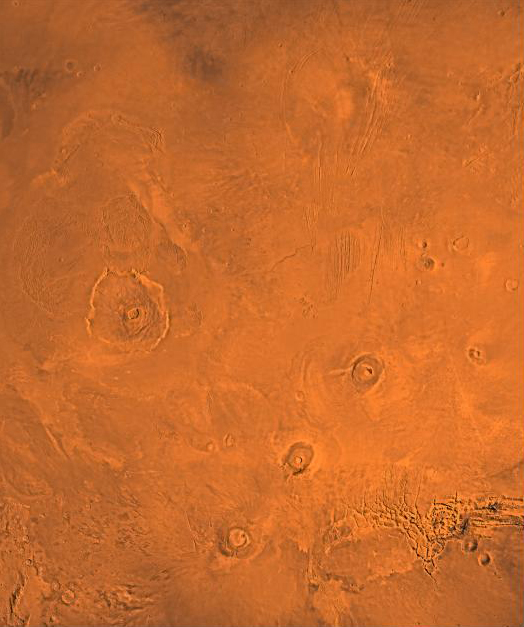The Tharsis Bulge on Mars

Olympus Mons is shown above just to the left of the center of the image. Lower are the three Tharsis Montes: Arsia Mons at bottom, Pavonis Mons at center, and Ascraeus Mons at top. To the right of these three volcanoes is the beginning of Valles Marinerus.
Approximately half of Mars consists of high elevation terrain which is heavily cratered. This lies mostly in the southern hemisphere. In this high-elevation part, there is an impressive uplifted continent about the size of North America called the Tharsis bulge. Rising about 10 km, this bulge contains a great 5000 mile rift called Valles Marinerus and four great volcanoes. The largest of these volcanoes, Olympus Mons, rises another 15 km above the continent.

This false color image shows the Tharsis Bulge in red and orange including the three great Tharsis Montes and Valles Marinerus. Olympus Mons at left is off the western edge of the bulge. This image was taken by the Mars Orbiter Laser Altimeter (MOLA)
Mars Concepts
Solar System Illustration
Solar System Concepts
Reference
Fraknoi, Morrison, Wolff
Ch 9
| HyperPhysics********** Astrophysics | R Nave |